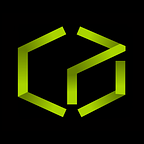Evolution of High Performance Low Cost Desktop Stereolithography (SLA) 3D Printers
Stereolithography (SLA) is a technology that forms 3D objects by solidifying liquid resins into patterned solid layers and stack the layers on top of one another. This technology is similar to the super high resolution photolithography used to pattern semiconductor chips. Other than high resolution, SLA technology also has the advantages of high precision, speed, and surface smoothness compared with other 3D printing technologies. Following the footstep of the FDM 3D printing, this wave of SLA 3D printing technology exploded in the last few years mainly is due to two factors:
- The expiration of the original patent from 3D Systems.
- Successful Kickstarter campaigns from new companies such as FormLabs, B9Creator, and Kudo3D.
Low cost SLA 3D printers have been through three different phases since the past 5 years. The first phase was an inverted version derived from 3D Systems’ laser scanning technology. Instead of a top-down approach, the bottom-up configuration eliminates the need of a wiper to generate uniform layers and drastically dropped the cost to a point where more people had access to a technology that was, originally, only affordable to a few.
However, the laser based SLA has several issues that are detrimental to users:
1. Laser diode is sensitive to temperature. When the heat dissipation is not good enough and the temperature of the laser is elevated, the laser will no longer operate under the fundamental circular mode and will switch to a multi-mode operation. This will make the beam profile become unstable, making the resolution and printing parameters drift away. On top of the mode hopping, the lifetime of a laser diode may be reduced due to high temperature.
2. The beam profile and intensity of the laser beam are sensitive to the dust that cling to the mirrors of the laser galvanometer. Cleaning the dust on these tiny mirrors is not an easy task.
3. Without an expensive beam profile correction mechanism, the beam profile will be circular in the center but become elliptical near the edge of build area.
4. Two extra actuators are required to drive the mirrors. This would increase the failure rate of a printer.
5. The cost to calibrate and maintain a laser based SLA system is very high. Most likely, the users have to send the printer back to the manufacturer for maintenance.
6. The beam size is limited to about 150 to 200 microns. The resolution is inherently lower compared with other type of SLAs.
The second phase was the digital light processing (DLP) based SLA method. In this method, each slice pattern is formed by a two dimensional projection rather than one dimensional laser beam drawing. As a result, DLP based printer is faster than laser based printer. DLP can also reach ultra-high resolution by projecting the images into a smaller area.
DLP printers have been popular especially in the high resolution jewelry, dental and research applications. Disadvantages for the DLP SLA method is that the cost is much higher and is hard to make the printer with a small footprint. Calibration and maintenance are easier than a laser based SLA and can be done by the users. DLP based printer is superior to laser based printer in multiple aspects except for the cost.
The third phase is the LCD based SLA method. The design of a SLA printer can be further simplified by using a LCD panel to generate patterns. Because the vat floor is in contact with the LCD, there is no need of optics to focus the light and this method eliminates the space required to accommodate the focal length of the lens. The vat floor is formed by a thin film of Teflon for layer releasing. The film becomes a consumable rather than the whole resin container. This saves the operating cost a lot for users.
For a 2K 5.5 inches LCD panel with a native pixel size of 47um, the actual XY resolution is very close to what DLP can achieve at the same resolution. The native resolution is determined by the pixel size of the LCD and is very uniform across the whole panel. This superior uniformity gives the printout a lot more precision without any calibrations for the hardware. As there are less components inside the printer, the maintenance requirement is much lower. In addition, the cost of a LCD panel is much lower than a DLP (resulting in a lower printer price) and makes the SLA technology even more accessible.
The future of SLA 3D printing is fairly bright. However, there are still some improvements that can be done for the LCD-based SLA technology. 4K panel will enhance the resolution further while maintaining the same or a larger build area. The last barrier that remains for the LCD panel is the RGB color filter. This filter removes a lot of close UV light and makes the panel less efficient. Once LCD printers dominate the SLA market, it is very likely that the last barrier will be removed, making the printers faster, consume less energy, and more reliable. This will be the day when SLA 3D printers become a truly consumer product.
This article was authored by Dr. Tedd Syao. He has more than 10+ years experience working with lasers.
